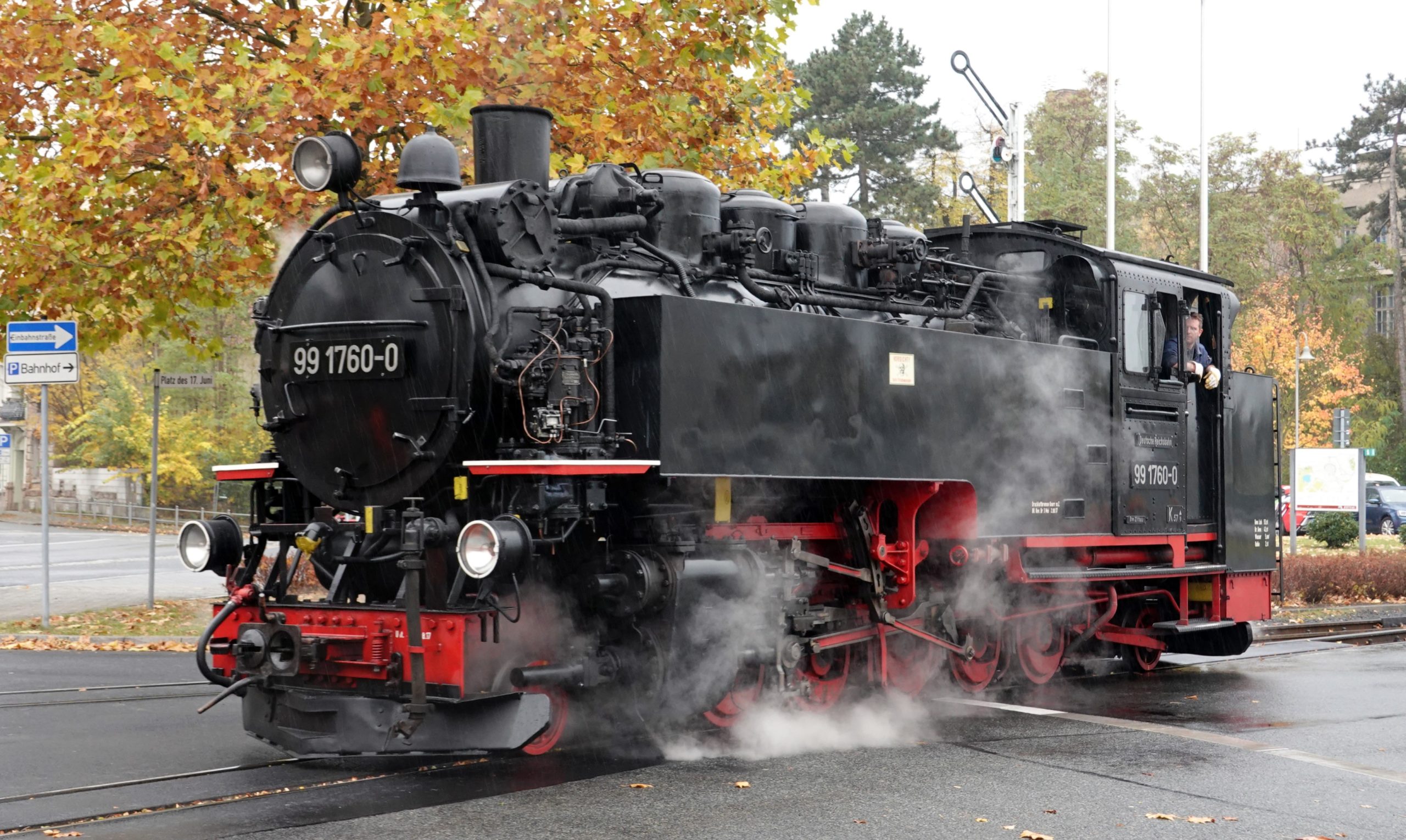Leichtölfeuerung auch für die 99 760 der SOEG

99 760 in Zittau (Foto Robert Horlacher)
Die SThe Sächsisch-Oberlausitzer-Eisenbahn G esellschaft commissioned the DLM to convert its 99 787 steam locomotive from coal to light oil firing. This pilot locomotive for Saxony is being financed with funds for coal structural change. The main reason for this is a possible reduction in CO2 emissions and thus a better eco-balance for the future of the railroad. Furthermore, the light oil firing helps with the increasing dryness in summer. Even if the daily railroads are allowed to operate during high forest fire levels, a forest fire would be a major problem for the regions. With its smoke- and spark-free light-oil firing system, the converted locomotive enables safe steam journeys even during severe drought. Another positive side effect of the light oil firing system is that it reduces the problem of procuring good locomotive coal, the price of which has multiplied in some cases in a short period of time, as well as improving working conditions for the firemen.Oberlausitzer-Eisenbahn Gesellschaft beauftragte die DLM mit dem Umbau einer weiteren Dampflokomotive von Kohlen- auf Leichtölfeuerung. Bei der 99 760 handelt es sich um eine „Altbaulok“, deren Bauart von der bereits auf Leichtölfeuerung umgerüsteten „Neubaulok“ 99 787 abweicht. Die „Altbauloks“ wurden für Steinkohlenfeuerung ausgelegt, während die „Neubauloks* für Braunkohle konzipiert waren, wodurch sie einen grösseren Rost, eine voluminösere Feuerbüchse und einen grösseren Brennstoffvorrat erhielten. Dies erfordert einige Anpassungen der Leichtölfeuerung.